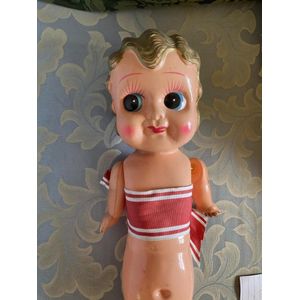
Vintage Japan Celluloid Kewpie Doll from Marie Prideaux Collection
A Japan made celluloid Kewpie doll. Length 36 cm. Provenance: From the Marie Prideaux Collection, some at the 'Hello Dolly!' exhibition at the Bendigo Art Gallery (2009-2010).

Antique 9ct Yellow Gold Kewpie Doll, Marked 9ct, 0.9g
Good antique 9ct yellow gold kewpie doll marked 9ct. Approx weight 0.9 grams
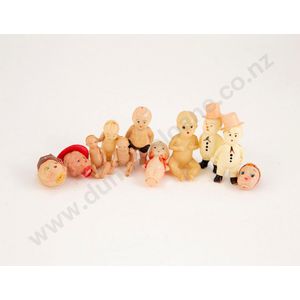
Tiny Celluloid Kewpie & Novelty Dolls Set
Eight tiny celluloid kewpie and novelty dolls, eight tiny celluloid kewpie and novelty dolls 5.5 cm - 4 cm
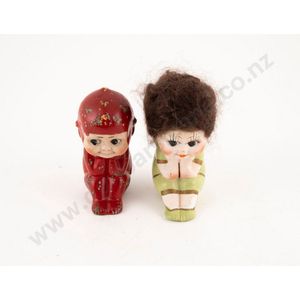
1920s/30s Seated Kewpie Type China Dolls Pair
Two circa 1920s/30s kewpie type china dolls, painted bisque and porcelain one with mohair wig both in seated pose 11 cm
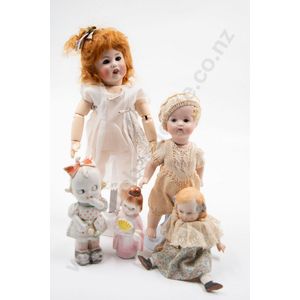
Bisque Dolls and Figures Collection
Two new bisque character dolls socket head on composition jointed body with two all bisque dolls and German #7865 kewpie type painted bisque figure and china figure, 28 cm, 21 cm, 14 cm
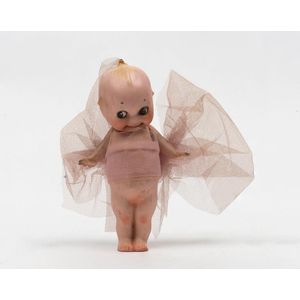
Vintage German Kewpie Doll with Pink Bow
'Kewpie' doll vintage German bisque doll, adorned in pink bow, c.1912-15, height 17 cm.
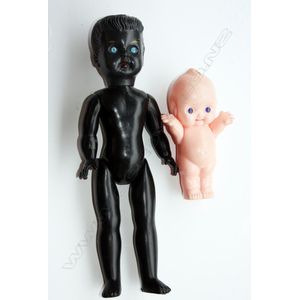
1950s Plastic Dolls: Black & Kewpie, Small Imperfections
2 1950's plastic Dolls, 1 Black 3.5 cm High, 1 Kewpie doll made from soft Polyethylene plastic, 17 mm h, small dent to each and hole in foot to black doll.
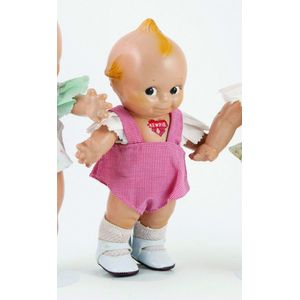
Rose O'Neill Kewpie Dolls with Labels - Pair, 30 cm
Pair Rose O'Neill all composition kewpie dolls, both with paper labels to chest 30 cm

Japanese Morimora Bisque Character Doll with Bent Limb Body
Japanese Morimora bisque character doll solid dome head with brown eyes, closed kewpie type mouth on 5 piece bent limb body 27 cm marked M monogram Nippon
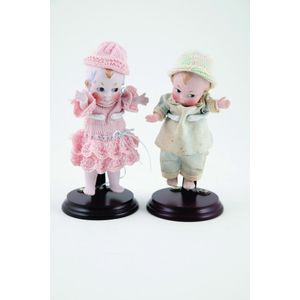
German Bisque Kewpie Dolls, Boy and Girl, 14cm
Two all bisque German kewpie dolls, dress as boy and girl, the girl with moulded blue ribbons to side of head 14 cm
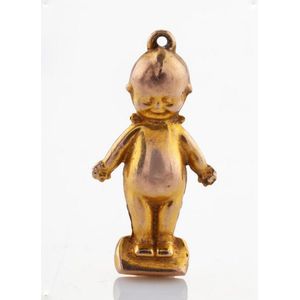
9ct Rose Gold Kewpie Doll Charm - 0.73g, 24mm
A gold Kewpie doll charm. 9ct rose gold. Weight 0.73 grams. Length 24 mm.
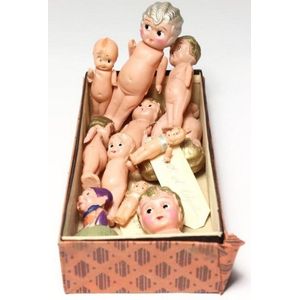
Celluloid Kewpies and Dopey Dwarf Set
Eleven celluloid Kewpie dolls and a celluloid Dopey the dwarf (12), Kewpies made in Japan.
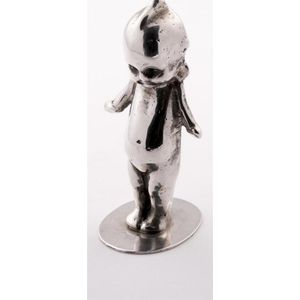
1915 Australian Sterling Silver Kewpie Doll by E. Fisher & Sons
An Australian sterling silver kewpie doll figure, E. Fisher & Sons, Melbourne c.1915 50g, 7 cm

Football Memorabilia Collection
Football Collectables, noted folder of club auction catalogues; annual reports of VFL second Eighteens 1926 & 1939; Victorian football Union (4) & Saturday morning football League (2); 1910 Australian football Council minutes (poor); 1948 Kia-Ora sports…

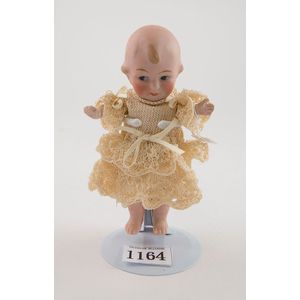
 Loading more...
Loading more...